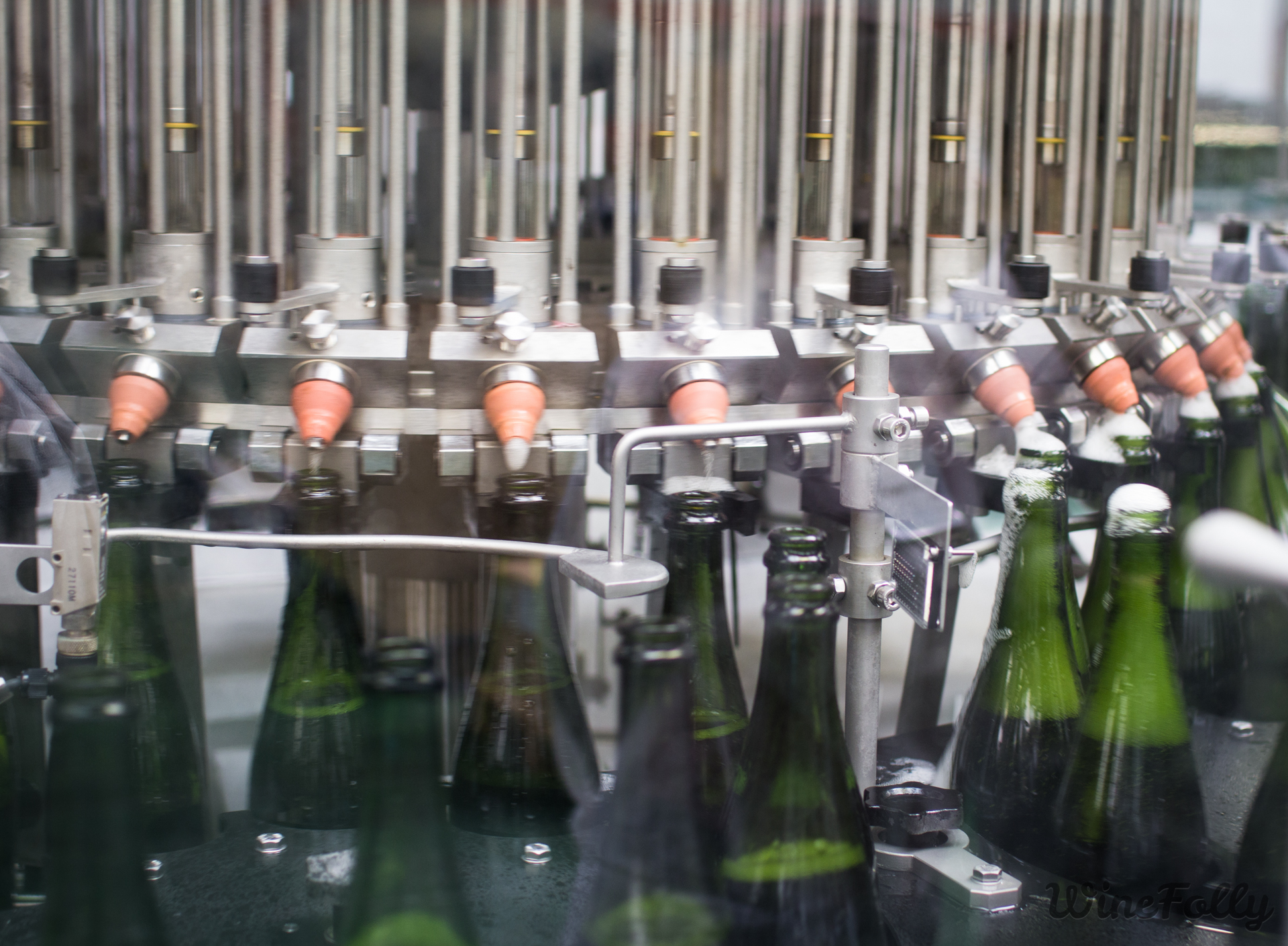A picture guide of how wine is made, from picking grapes to bottling wine.
Depending on the grape, the region, and the kind of wine that a winemaker wishes to produce, the exact steps in the harvesting process will vary in time, technique, and technology. But for the most part, every wine harvest includes these basic vine-to-wine steps:
- Pick the grapes
- Crush the grapes
- Ferment the grapes into wine
- Age the wine
- Bottle the wine
Here’s a photo guide that covers each step of winemaking, from the moment the grapes are picked until the wine is put into bottles. Enjoy!
Wine Harvest 101: From Grapes to Glass

1. Pick the Grapes
Most vineyards start with white grapes and then move to red varieties. The grapes are collected in bins or lugs and transported to the crushing pad, where they are turned into juice and then wine.

Man vs. Machine: The grapes are either cut from the vine by human hands with shears or a machine removes them.

Night Harvest vs. Day Harvest: The grapes are either picked during the day or at night to maximize efficiency, beat the heat, and capture grapes at stable sugar levels.

At this point in the process, the grapes and their stems are still intact, along with some leaves and sticks that made their way from the vineyards. These will all be removed in the next step.

2. Crush the Grapes
No matter how or when the grapes were picked, they all get crushed in some fashion in the next step. The de-stemmer, a piece of winemaking machinery that does exactly what it says, removes the stems from the clusters and lightly crushes the grapes.


White Wine: Once crushed, the white grapes are transferred into a press, another piece of winemaking equipment that is literal to its name.
The grapes are pressed to extract the juice, leaving behind the skins. The pure juice is then transferred into tanks, where sediment settles to the bottom.
After a settling period, the juice is “racked,” which means it’s filtered out of the settling tank into another tank to ensure all the sediment is gone before fermentation starts.


Red Wine: Red wine grapes are also commonly destemmed and lightly crushed. The difference is that these grapes and their skins go straight into a vat to start fermentation on their skins.

3. Fermenting Grapes Into Wine
Simply put, fermentation is where the sugar converts into alcohol. Many techniques and technologies are used during this process to accompany the different kinds of grapes. To keep things simple, this stage mainly includes:
- Red and white wines: Yeast is added to the vats so that fermentation can take place.
- Red wines: Carbon dioxide is released during fermentation, which causes the grape skins to rise to the surface. Winemakers must punch down or pump over the “cap” several times a day to keep the skins in contact with the juice.
- Red wines: The grapes are pressed after fermentation is complete. After racking to clarify the wine, the reds will spend several months aging in barrels.



4. Age the Wine
Winemakers have many choices in this step; again, they all depend on the kind of wine one wants to create. Flavors in wine become more intense due to several of these winemaking choices:
- Aging for several years vs. several months
- Aging in stainless steel vs. oak
- Aging in new oak vs. ‘neutral’ or used barrels
- Aging in American oak barrels vs. French oak barrels
- Aging in various levels of ‘toasted’ barrels (i.e. charred by fire)

5. Bottle the Wine
When the winemaker feels a wine has reached its full expression in aging, it’s time to bottle it for consumption. And the rest is history, my friends.
- Some white wines are ready to be bottled after a few months.
- Most dry reds need 18-24 months of aging before bottling.
